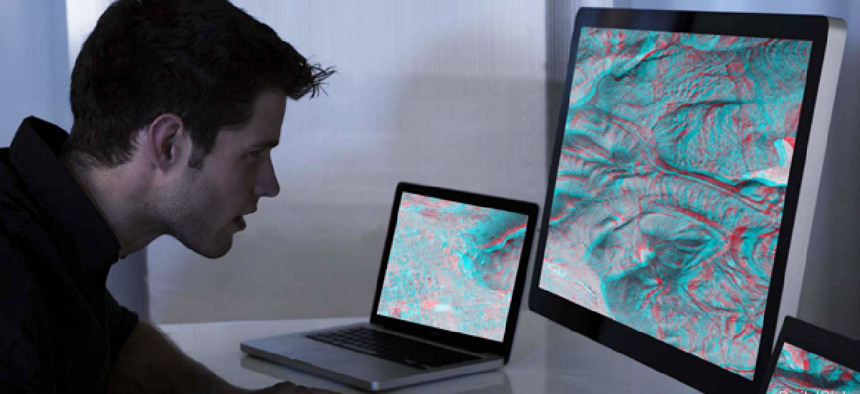Satellite image analysis scales with deep learning, crowdsourcing


Connecting state and local government leaders
Crowdsourced image validation combined with machine learning shrinks the pool of imagery requiring human analysis.
One of the few remaining things humans can still do better than machines is recognize patterns in images. Unfortunately, humans aren’t very fast at processing massive amounts of imagery.
DigitalGlobe, a provider of high-resolution Earth imagery and analytics, processes 4 million square kilometers of satellite imagery every day. “There aren’t enough intelligence analysts in the world to put eyes on every piece of data that we collect,” said Tony Frazier, senior vice president of defense and intelligence solutions at DigitalGlobe.
DigitalGlobe’s solution? Use the best of both machine and human capabilities.
According to Frazier, the company has been training a combination of deep learning tools -- NVIDIA graphics processors, the Caffe deep learning framework and the OpenCV computer vision and machine learning software library among them -- to make the first pass on its imagery, identifying objects and activities. The objects may be fixed infrastructure, such as buildings and bridges, or moveable items, such as helicopters and airplanes. Activities may be events such as wildfires or flooding.
According to Frazier, government clients are interested in achieving “a high recall and moderate precision.” So long as the program catches 90 percent of the objects being looked for, he said, “even if there are number of false positives, they are okay with that. We’re not trying to be perfect. We’re trying to narrow the search space.”
Frazier says the deep-learning algorithms -- which are running on the company’s GDBX (Geospatial Big Data) platform -- are already delivering the level of performance required by clients. Even better, he said, the algorithms only get better as they learn.
And one way they learn is by being backstopped by humans, through crowdsourcing.
According to Frazier, the company can call on a community of more than 1 million volunteers to validate data in the wake of events, such as the recent earthquake in Nepal. “Less than two weeks after that event,” he said, “we had north of 60,000 volunteers who had put eyes on over 1 million tiles of imagery to do things like damage assessment. And all of that learning goes back into the system to make the machine learn over time.”
The machine and human analyses of imagery are actually just the final stages of DigitalGlobe’s processing of its satellite imagery. First the imagery must be sliced into digestible chunks of data.
“A single image from our satellite has multiple gigabytes of content, upwards of 50 gigabytes,” Frazier said. “You need to be able to turn that into more bite-sized chunks of information.”
That’s where MrGeo, a program developed jointly by DigitalGlobe and the National Geospatial-Intelligence Agency, comes in. Built on Apache Spark and the Hadoop ecosystem, MrGeo handles the storage, processing and slicing of imagery files so that they can be moved to Amazon Web Services for analytic processing by the deep-learning algorithms on hundreds of commodity computers.
“The elasticity of the cloud allows us to get a lot of computers working on a problem,” Frazier said.
NEXT STORY: Another great leap for GPS?




